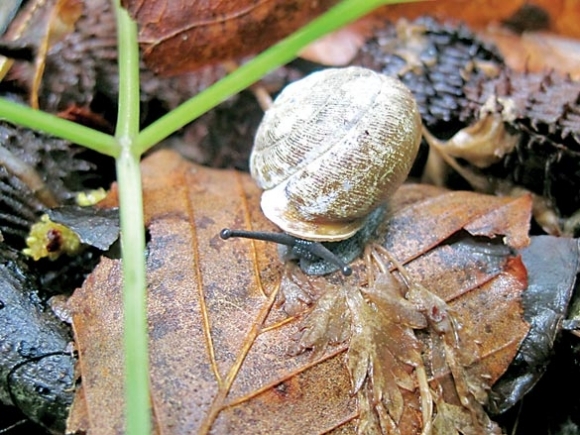Endangered snail thrives after wildfire

After the fall 2016 wildfires concluded, biologists feared that the flames had devastated populations of the rare noonday globe snail — but a recent survey revealed that the snail could be closer to coming off the endangered species list than anyone thought possible.
“When forest fires came through the gorge last winter, people were worried it may have been driven to extinction,” said Jason Mays, a U.S. Fish and Wildlife Service biologist. “On the face of it, you wouldn’t expect snails to cope too well with forest fire. We discovered the snail not only survived the fire, but it’s found across a much broader swath of the gorge’s southern face than we ever realized.”
The snail, which was known only to exist on a portion of the southern side of the Nantahala River Gorge in Swain County, was placed on the federal endangered species list in 1978.
Mays led a team to search the gorge for signs of snail survival this March. The search happened after the fire had burned leaf litter from the forest floor and before spring vegetation emerged, making searching for snails easier than it had ever been.
While before the fire the snails were known only to live in a 2-mile stretch of the gorge’s southern side, this year’s study documented snails living in an area 5 miles long and extending to the top of the ridge. A mark-recapture study yielded a population estimate of more than 3,000 noonday globe snails in the section of the gorge containing the best snail habitat.
The Nantahala Gorge is one of the few outcrops of calcium-rich rocks and soils in Western North Carolina, making it prime habitat for snails, which need calcium to make their shells. The steep topography also contributes to snail success, as the noonday globe snail prefers the damp habitat afforded by ample shade.





